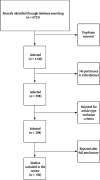The Role of Inflammation in Crohn's Disease Recurrence after Surgical Treatment
- PMID: 33426097
- PMCID: PMC7781709
- DOI: 10.1155/2020/8846982
The Role of Inflammation in Crohn's Disease Recurrence after Surgical Treatment
Abstract
Introduction: Postoperative recurrence after surgery for Crohn's disease (CD) is virtually inevitable, and its mechanism is poorly known.
Aim: To review the numerous factors involved in CD postoperative recurrence (POR) pathogenesis, focusing on single immune system components as well as the immune system as a whole and highlighting the clinical significance in terms of preventive strategies and future perspectives.
Methods: A systematic literature search on CD POR, followed by a review of the main findings.
Results: The immune system plays a pivotal role in CD POR, with many different factors involved. Memory T-lymphocytes retained in mesenteric lymph nodes seem to represent the main driving force. New pathophysiology-based preventive strategies in the medical and surgical fields may help reduce POR rates. In particular, surgical strategies have already been developed and are currently under investigation.
Conclusions: POR is a complex phenomenon, whose driving mechanisms are gradually being unraveled. New preventive strategies addressing these mechanisms seem promising.
Copyright © 2020 B. Sensi et al.
Conflict of interest statement
The authors declare that there is no conflict of interest regarding the publication of this article.
Figures
References
Publication types
MeSH terms
Substances
LinkOut - more resources
Full Text Sources
Medical




